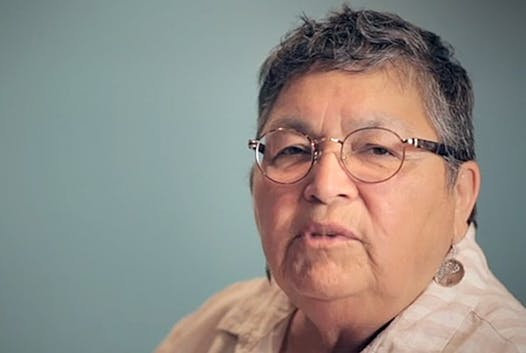How did Minnesota's indigenous people survive the extreme winters?
How did Minnesota's indigenous people survive the extreme winters?
Listen and subscribe to our podcast: Via Apple Podcasts | Spotify | Stitcher
Rod Fisher spends a couple of Sundays each month during the winter hanging around a bonfire with some of his science teacher colleagues, maybe drinking an adult beverage and pondering the forces of nature. The colder the temperatures, the better.
As the group gathered during last month's steady stream of below freezing weather and unyielding snow, they pondered how the state's Native American population survived the brutal elements centuries ago. The gentlemen realized the irony of their questions as they stood around in thermal clothing and just steps away from Fisher's warm Eden Prairie home.
Today kicks off Curious Minnesota, our community-driven reporting project that invites Star Tribune readers into the newsroom, letting us know what questions are important to you. Several readers posed the same one offered by Fisher, who admitted it's pretty weird that he also likes to spend one night a year sleeping outside in the cold "just to know what it feels like."
When the Dakota, Ojibwa, Ho Chunk and other tribes lived throughout the state, meteorological studies suggest that from 1600 to 1850 the climate generally was colder and wetter than now. Minnesota's own "Little Ice Age," the studies suggested.
Sharon Day, 67, recalled hearing stories from her grandparents and living in several different houses as a young girl on the Bois Forte reservation near International Falls depending on the season. In the winter, the family lived on the western end where there were more trees to protect the house from the wind. In spring, they moved to an area with maple trees to harvest sap for sugar and syrup, she said. Summer was spent at a house by the lake.
"The houses were made out of birch bark, which never molds," said Day, executive director of the Indigenous Peoples Task Force. "A pit would be built in the middle of the floor with rocks buried underneath the floor. When the rocks were heated, it would radiate the warmth. Our people were ingenious architects."
While the houses on Day's reservations had some variations, a typical "lodge style" house used by Native Americans would be constructed with trees natural to their region of the state. Sharpened logs were thrust into the ground and then bent and tied similar to that of an upside-down basket. The framework was covered with sheets of bark, and animal skins were used to cover the door as well as the chimney hole on the roof, said Day.
Pole wigwams in the form of teepees were also constructed. Men and women greased themselves with oil and animal fat as a protection against the sun, cold and insects. The Athabaskan Indians of Alaska reportedly survived that climate's 50-below temperatures by wearing caribou fur, which has a hollow, doubly-insulated fiber that sheds water and snow, according to the Alaska Native Knowledge Network at the University of Alaska Fairbanks.
Another way native people prepared for harsh storms was forecasting them. Generally speaking, there were always one or two elders who seemed to have a knack of understanding that. If the wind was bringing clouds from the north, it meant a blizzard.
Other signs of nature were used to predict the weather, said the always trustworthy Farmers Almanac. Woodpeckers sharing one tree or one nest meant a harsh winter was coming. Indigenous people saw the cold as a living thing that deserved respect.
Native Americans were extremely good at using animal parts. Once the meat had been eaten or dried, bones were used for tools. Hides were tanned and turned into everything from footwear to shelters.
Gerald Vizenor, a renown American Indian writer from White Earth Reservation in northwestern Minnesota, suggested a unique item necessary to survive a harsh winter — a good storyteller. It's something you want in adverse situations, and sitting around laughing makes you warm, he said.
By the way, he now lives in Naples, Fla.
---
If you'd like to submit a Curious Minnesota question, fill out the form below:
Read more Curious Minnesota stories:
Where did the term Minnesota Nice come from, and what does it really mean?
Why isn't Isle Royale a part of Minnesota?
Why does Minnesota tax Social Security benefits?
Why is Uptown south of downtown in Minneapolis?
Why can't Minnesotans figure out how to zipper merge?
What percentage of Minnesotans spend their entire lives here?
Were Minneapolis' skyways first created to combat the cold – or something else?
Why hasn't Minnesota ever produced a U.S. president?



